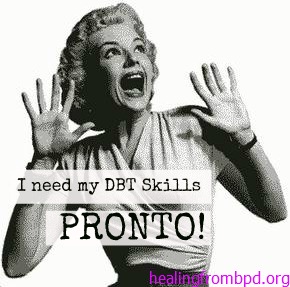Validation and Empowerment: The necessary balance for self help

Steven Stosny has a (fairly) new post on “Validation and Empowerment” which covers emotional validation vs. the empowerment necessary to change for the better. I like Stony’s work quite a bit and I agree that there is a balance between emotional validation and empowerment. When dealing with people that have been emotionally invalidated, it is my opinion that the balance initially should be tipped toward emotional validation. This is why DBT adds acceptance to the mix. If everything needs to change all at once, the thought of changing everything seems overwhelming and nothing changes – there’s no empowerment to improve and become effective. Instead, the person is stuck in helplessness.
In my I-AM-MAD tool, the “D” stands for “don’t solve the problem”. This is where empowerment comes into play. As a loved one of a person with BPD (or another emotionally sensitive person), allowing the person to solve their own problems encourages empowerment. You’re allow them to teach themselves to fish (while being a facilitator of this learning) without telling them what to do and handing them a fish.
That being said, one of the core problems with BPD is a sense that no one “gets” them. Emotional validation provides the framework for the other person to feel as if their loved one gets them and they make sense in how they feel. It is not the job of the loved one to be a therapist. Yet, facilitated (and reinforced) self-empowerment can lead to a path of healing and more effective behavior.
Here’s a quote from the Stosny article:
When I supervised counseling interns of various helping professions, the most difficult struggle was to help them strike a balance between emotional validation – how you feel – and empowerment – the ability to change your state of being, including your feelings and behavior, for the better. Balance is absolutely necessary. If you don’t validate sufficiently, distressed clients will resist the best empirically supported attempts to empower them to make their lives better. But if you validate too much, they begin to identify with their pain or their symptoms or the abuse they’ve suffered. They come to feel like they would invalidate their experience by getting better and lose their identities by improving their lives: “Who am I, if not a victim or codependent or depressed or anxious?” Emotional validation without empowerment is not true compassion but ineffectual pity, and empowerment without emotional validation makes clients feel that you’re not really “getting them,” you’re just telling them how they should feel.


